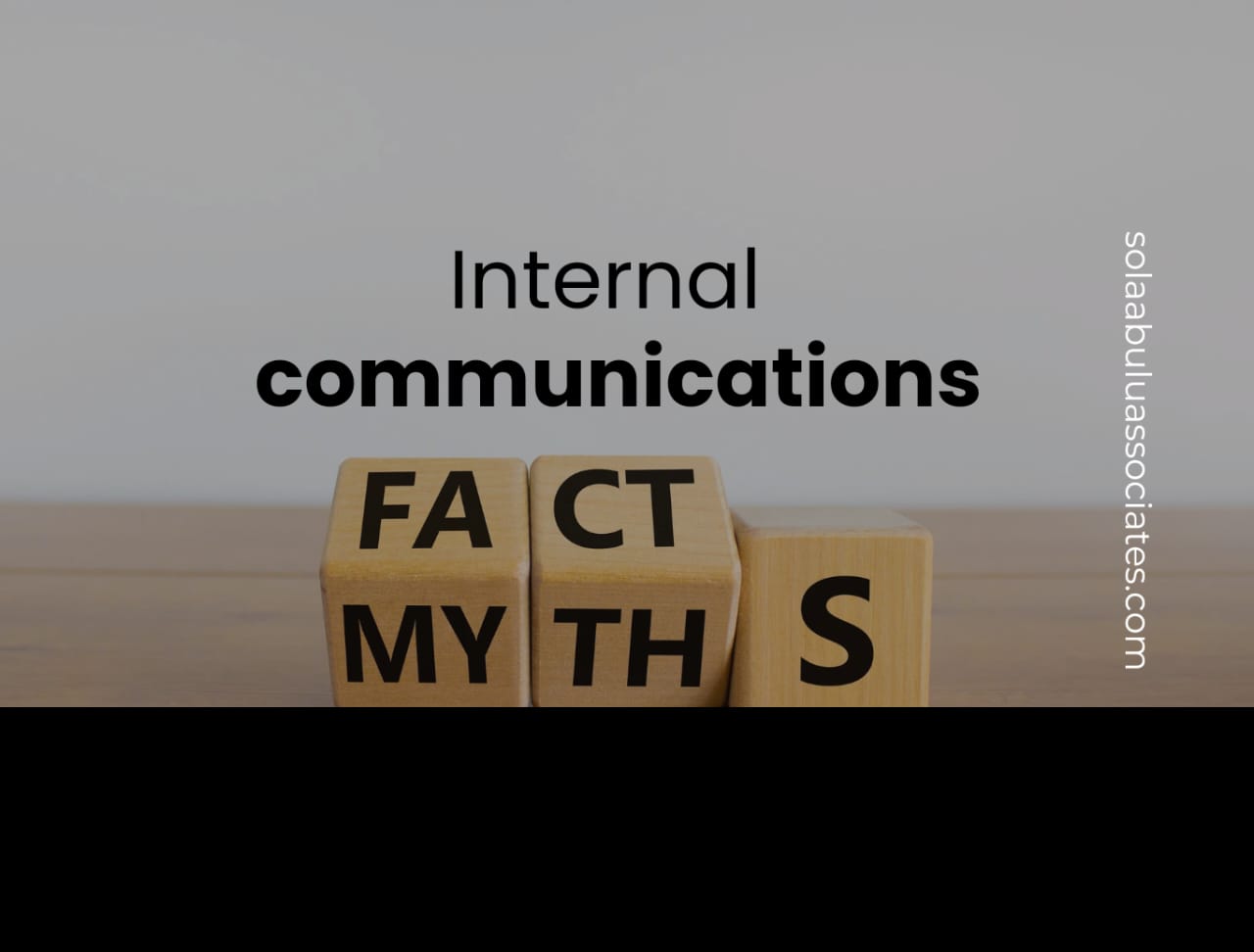What is the Structure in Building An Internal Communications Strategy

An article by Forbes titled “Internal Communications is the Heartbeat of Every Organization” states:
As an internal communicator, your job is to present honest, truthful, transparent communications that all employees can understand and digest, while not upsetting the rest of the executive team. It’s also your responsibility to provide strategic communications support to the CEO. Being in this role can be difficult, especially when executives don’t agree on the need to be transparent or don’t see the value in what the internal communicator is doing.
Internal communications is a practice area that involves communicating within the organization which includes employees and others in the value chain.
Businesses with 100+ employees and staff need to put a structure in place that supports an internal communications strategy because word of mouth alone becomes insufficient. Internal communications ensures that communications is more intentional and purposeful in order to achieve meaning and a desired outcome. You will find this video resource by our principal consultant, Sola Abulu on Internal Communications & Organizational Effectiveness very insightful
Building an internal communications strategy is important for businesses and organizations across different sectors. Religious organizations, non-profit organizations, private businesses and government owned establishments all need to set a structure in place in order to build an internal communications strategy.
There needs to be a structure in place for internal communications to work well. Without the structure it is impossible to have an orderly approach to communicating different messages at specific times for identified purposes. The most important aspect is determining which platforms are best for different purposes
Internal communications protocols, policies and guidelines need to be in place. Also, the communications platforms adopted for use by the business or organization and the purpose for each needs to be clearly defined. The structure also determines the messaging that can be passed across via the intranet or email.
On the other hand, an internal communications protocol defines how messages are written, signed off and approved by senior leaders before dissemination to internal stakeholders. Also, in cases where the duties of an internal communications manager is seemingly related to that of the human resource team, this protocol guides responsibilities between both departments. In cases where employees within another department disseminates information through the channels, the protocol should only allow for this to happen after the messaging is reviewed by the communications team in order to spot inappropriate content from a communications/risks perspective.

Click here to learn about some common internal communications facts and myths.
Examples of Communications Tools to Build A Structure With
- An example is having a bulk short message service (SMS) that is used solely for security notifications. This structure informs the communications strategy and keeps other platforms from being over flogged. In the instance where security and safety information is passed across through a regular communications channel, it loses the sense of urgency and alertness that it should have and can cause further harm. Thus, where there is no structure around the platforms, some platforms tend to be overloaded.
- Also, when the Email channel is overloaded with both valuable, urgent and less important messages, internal stakeholders tend to pay less attention to them and consequently miss out on important messages which can cause the business harm.
While important corporate messages from the leadership can come through email, security messages should be communicated via direct short message services (SMS) because of instances where some field staff may not have access to internet services.
- Tools like Yammer can be used for information sharing and team collaboration as it is built to provide more data security compared to platforms like WhatsApp which is subject to hacking
- WhatsApp must not be used for confidential information as it enables quick sharing and can breach the organization’s data privacy regulations. This explains the need for an internal communications policy.
Building the structure for internal communications strategy is of utmost importance to organizations with a hierarchical leadership structure.
When these structures are in place, the internal communications strategy becomes more effective. Read our previous article to learn how to develop an internal communications strategy.
Subscribe to our YouTube channel for more educational resources on Strategic Communication: Click here
Importance of an Internal Communications Strategy
- Builds collaboration within the organization
- Sustains a shared vision within all internal stakeholders
- It is useful for change management
- Builds a corporate culture
- Provides a holistic view of the impact of each team’s contribution.
Follow the Sola Abulu & Associates channel on WhatsApp: Here
PLAY-ON-DEMAND COURSES: Sola Abulu & Associates is a CPDSO accredited training provider. Our play-on-demand courses are accredited by the Continuing Professional Development Standards Office in the United Kingdom. Click this link to enroll for a course or more in our portfolio.
Training inquiries to: training@solaabuluassociates.com
2025 Training Brochure: for details on our training offerings
2025 Consulting Brochure: for details on our consulting service offerings
Sola Abulu & Associates (SA&A) is a strategy and communications consulting and training firm focused on enabling businesses, brands and organizations to achieve their desired objectives through strategic communications, organizational effectiveness and reputation management.
Chat with us for more information on our courses.
